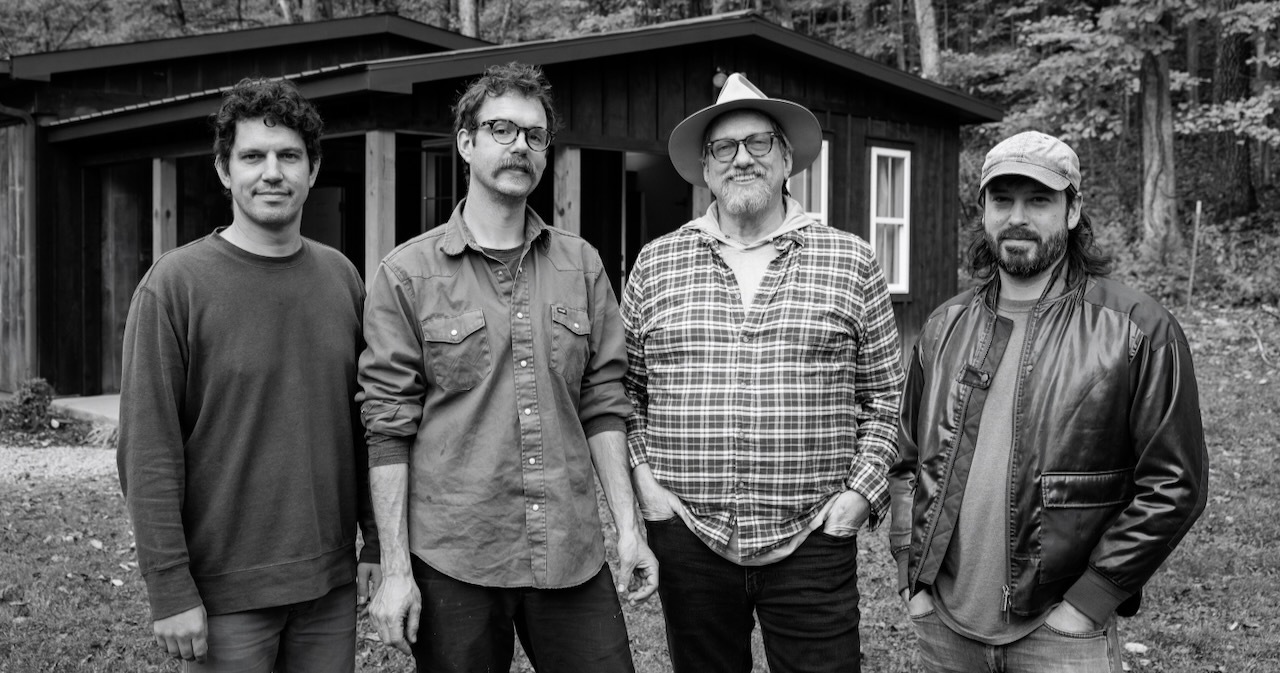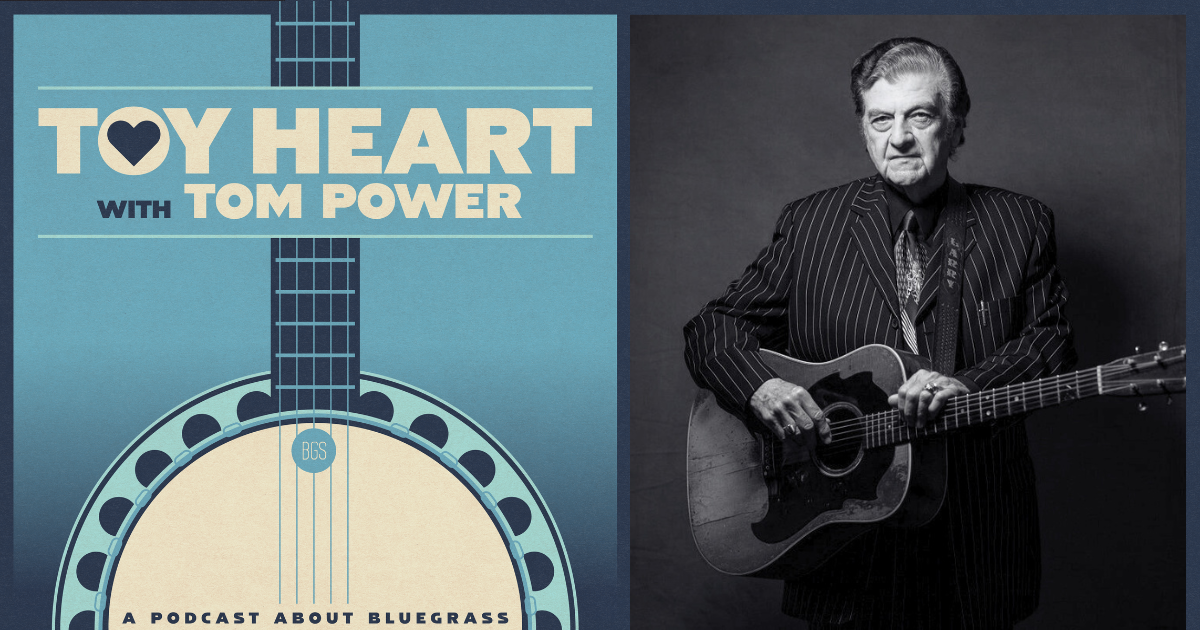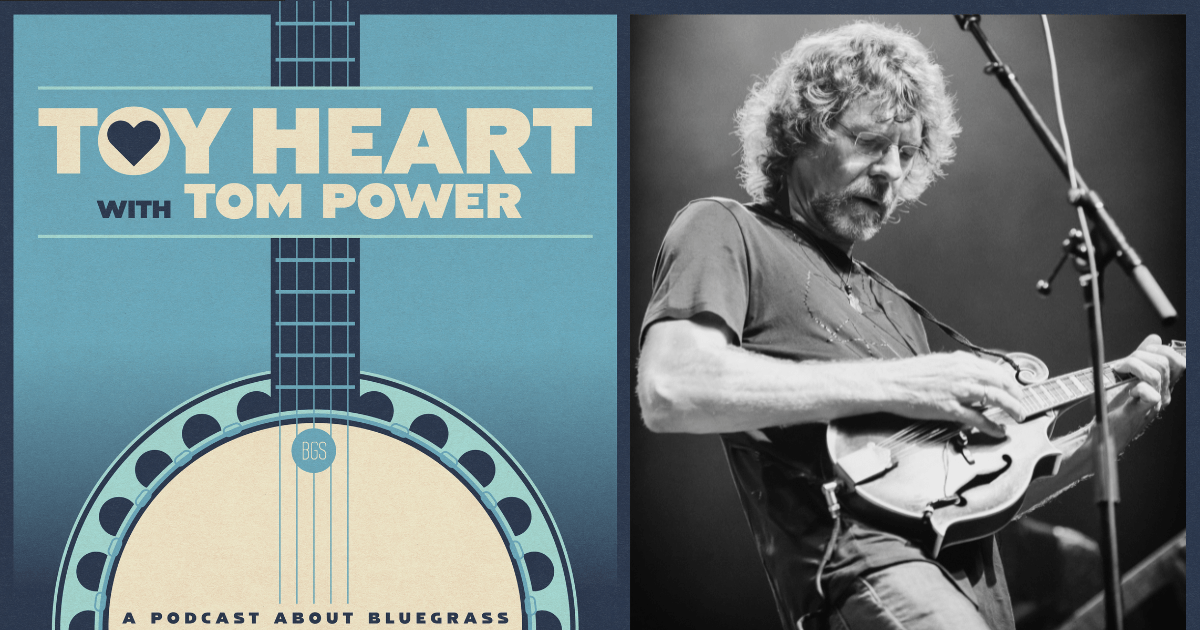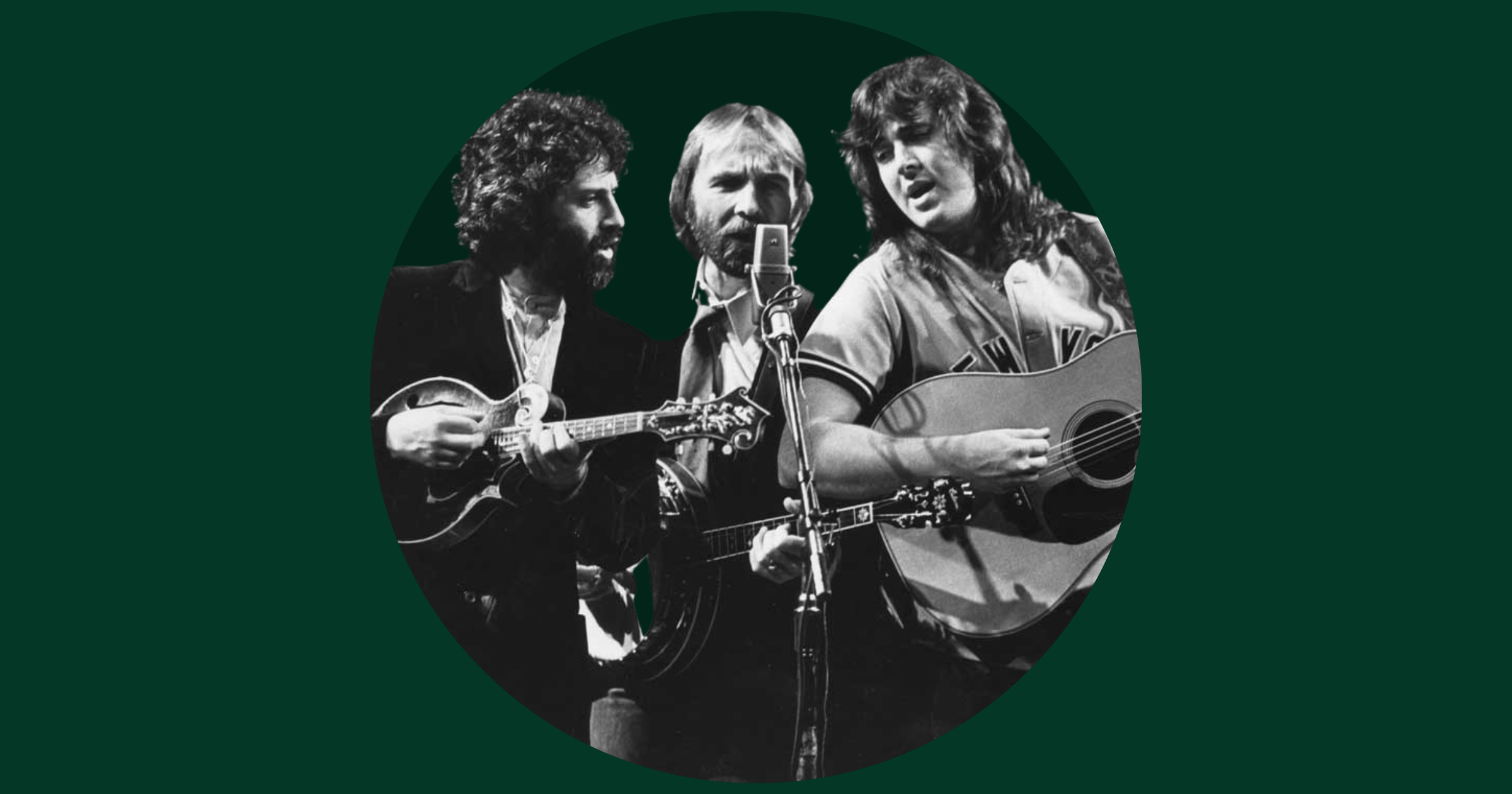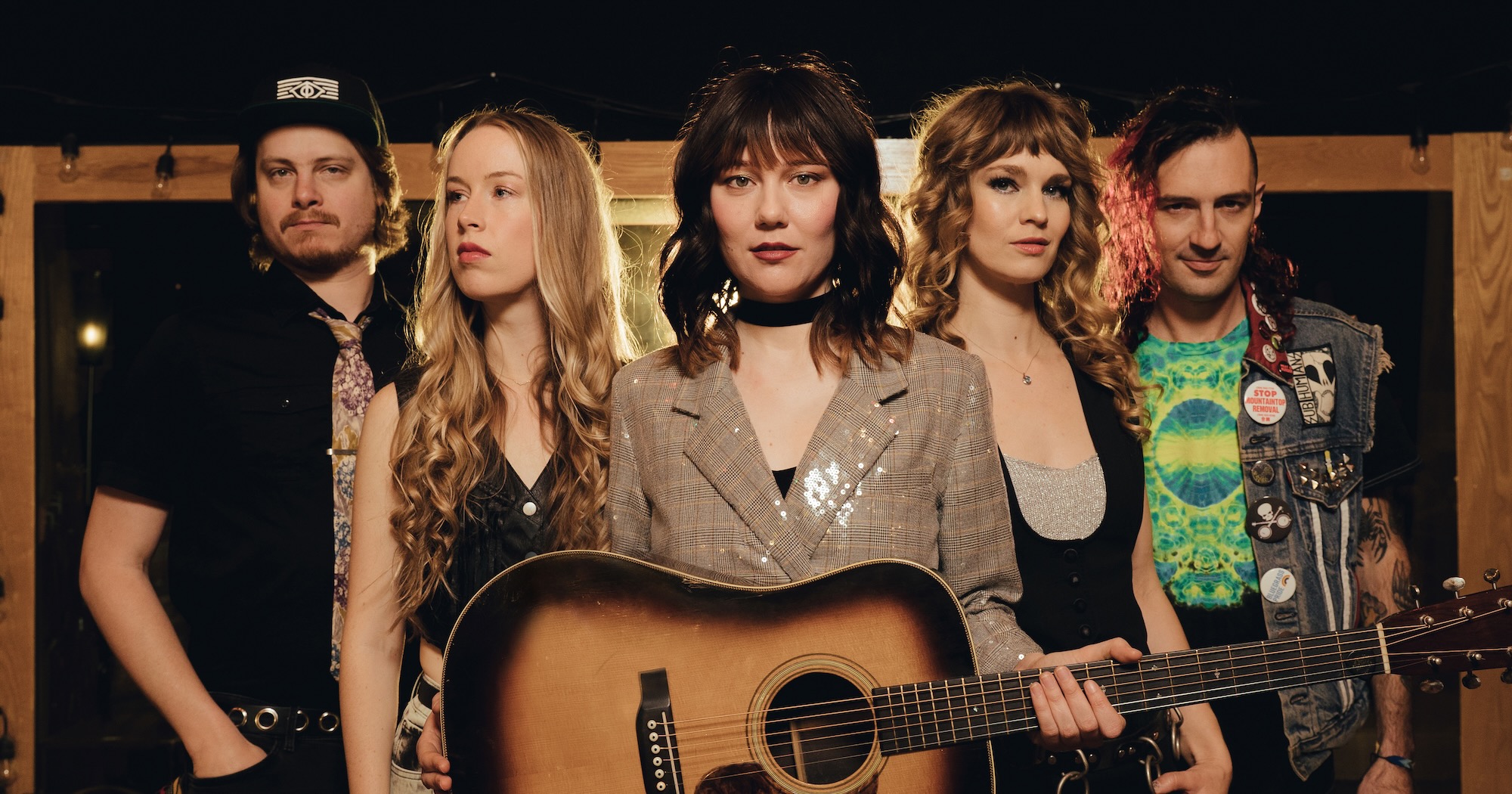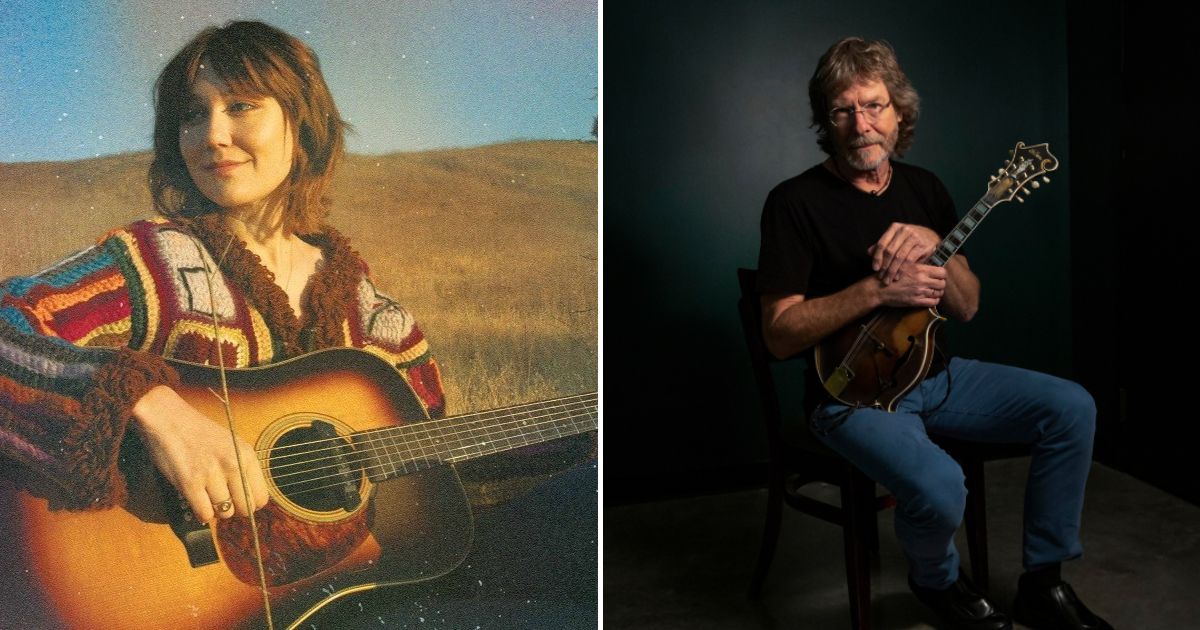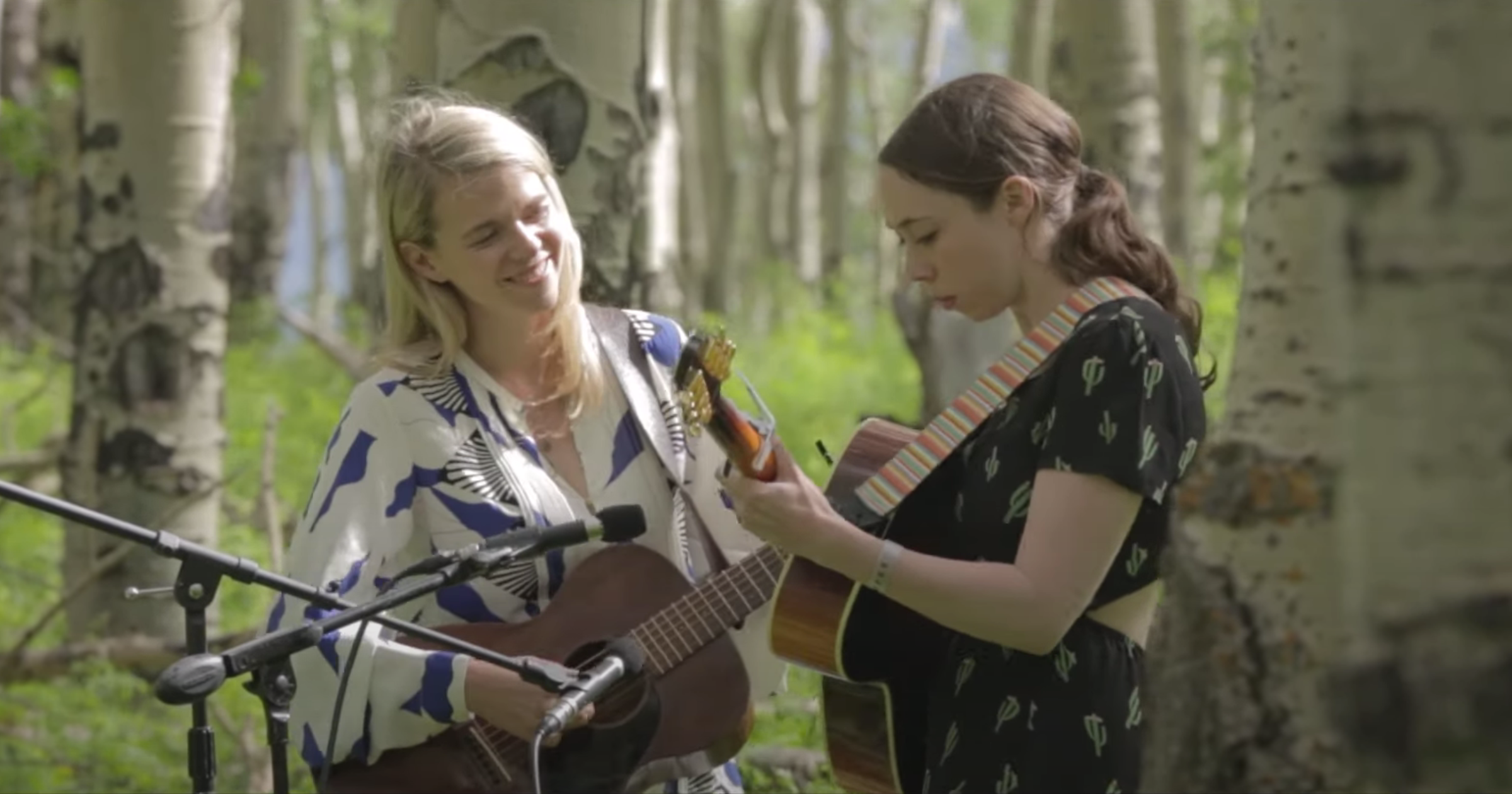Today, July 16, 2025, the nominees, inductees, and recipients of the 36th Annual IBMA Bluegrass Music Awards were announced in Nashville, Tennessee at a special live event broadcast from SiriusXM’s studios co-hosted by Sierra Hull and Bluegrass Junction radio host and programmer Joey Black. The announcement broadcast also featured live on-air performances by Hull and the Travelin’ McCourys.
Alison Krauss & Union Station lead the nominations following the release of their first album in over a decade, Arcadia. Between Krauss, and Union Station’s band members, the group have amassed nine nominations, including Entertainer of the Year – for which their last win was in 1995 – Album of the Year, and Vocal Group of the Year. Billy Strings, who last took home an Entertainer of the Year trophy in 2023, received five nominations – for Entertainer of the Year, Album of the Year, Instrumental Group of the Year, Male Vocalist of the Year, and Guitar Player of the Year.
Alison Brown & Steve Martin have racked up a handful of nominations between them this year, too, and Jason Carter & Michael Cleveland’s excellent new duo album – and the pair of fiddlers themselves – appear all across the nominees list, the duo collecting nine nominations together and separately.
And, for the first time in the nearly 40-year history of the IBMA, a Black person will be inducted into the Bluegrass Music Hall of Fame. Arnold Schultz, a seminal figure in bluegrass, blues, and old-time credited with greatly influencing the Father of Bluegrass, Bill Monroe, will be the first non-white member of the genre’s hall of honor.
“Our mission is to inspire innovation by recognizing the great work done by artists this past year and to honor tradition by inducting new members into the Bluegrass Music Hall of Fame,” said Ken White, executive director of IBMA, via press release. “The early influence of Arnold Shultz on Bill Monroe continues to shine through in the playing of even the youngest member of Kids on Bluegrass.”
Joining Schultz in this year’s class of Hall of Fame inductees are the Bluegrass Cardinals and Hot Rize. Additionally, IBMA announced 2025 recipients of their Distinguished Achievement Award, including Alan Arthur Knoth, Penny Parsons, Ron Thomason, Sidney Austin, LLP, and Missy Raines.
IBMA’s annual conference, World of Bluegrass, the IBMA Bluegrass Music Awards, and the organization’s annual festival, IBMA Bluegrass Live! will take place this year in a brand new host city, Chattanooga, Tennessee. The conference will run September 16-18 at the Chattanooga Convention Center; the IBMA Bluegrass Ramble, the event’s showcase series, will also run Sept. 16-18 in local venues. The 36th Annual IBMA Bluegrass Music Awards, where the winners, recipients, and inductees will be honored by their peers and fans, is scheduled for Thursday evening, Sept. 18; IBMA Bluegrass Live! will be held Sept. 19-20.
Find more information on IBMA and all of this year’s World of Bluegrass events in Chattanooga here and find the full list of nominees, recipients, and inductees below.
ENTERTAINER OF THE YEAR
Alison Krauss & Union Station
Appalachian Road Show
Billy Strings
East Nash Grass
The Del McCoury Band
SONG OF THE YEAR
“5 Days Out, 2 Days Back” – Alison Brown, Steve Martin, Featuring Tim O’Brien
Songwriters: Steve Martin, Alison Brown
Producers: Alison Brown, Garry West
Label: Compass Records
“Big Wheels” – Authentic Unlimited
Songwriter: Jerry Cole
Producer: Authentic Unlimited
Label: Billy Blue Records
“Coal Dust Kisses” – The Grascals
Songwriters: Susanne Mumpower, Jerry Salley
Producer: The Grascals
Label: Mountain Home Music Company
“My Favorite Picture of You” – Darin & Brooke Aldridge
Songwriters: Darin Aldridge, Brooke Aldridge, Dennis Duff
Producers: Darin Aldridge, Mark Fain
Label: Billy Blue Records
“Outrun the Rain” – Jason Carter & Michael Cleveland
Songwriters: Terry Herd, Jimmy Yeary
Producers: Jason Carter, Michael Cleveland
Label: Fiddle Man Records
ALBUM OF THE YEAR
Arcadia – Alison Krauss & Union Station
Producer: Alison Krauss & Union Station
Label: Down the Road Records
Carter & Cleveland – Jason Carter & Michael Cleveland
Producers: Jason Carter, Michael Cleveland
Label: Fiddle Man Records
Earl Jam – Tony Trischka
Producers: Tony Trischka, Lawson White
Label: Down the Road Records
Highway Prayers – Billy Strings
Producers: Billy Strings, Jon Brion
Label: Reprise Records
I Built a World – Bronwyn Keith-Hynes
Producers: Brent Truitt, Bronwyn Keith-Hynes
Label: Sugar Petunia Records
VOCAL GROUP OF THE YEAR
Alison Krauss & Union Station
Authentic Unlimited
Blue Highway
Sister Sadie
The Del McCoury Band
INSTRUMENTAL GROUP OF THE YEAR
Billy Strings
East Nash Grass
Michael Cleveland & Flamekeeper
Molly Tuttle & Golden Highway
The Travelin’ McCourys
GOSPEL RECORDING OF THE YEAR
“Blue Collar Gospel” – Jerry Salley Featuring The Oak Ridge Boys
Songwriters: Rick Lang, Bill Whyte, Jerry Salley
Producer: Jerry Salley
Label: Billy Blue Records
“Dear Lord” – Darin & Brooke Aldridge
Songwriter: Daniel Davis
Producers: Darin Aldridge, Mark Fain
Label: Billy Blue Records
“Even Better When You Listen” – Joe Mullins & The Radio Ramblers
Songwriters: Rick Lang, Mark BonDurant
Producer: Joe Mullins & The Radio Ramblers
Label: Billy Blue Records
“He’s Gone” – Jaelee Roberts
Songwriter: Kelsi Harrigill
Producer: Byron House
Label: Mountain Home Music Company
“Wings of Love” – Authentic Unlimited
Songwriters: Jesse Brock, Stephen Burwell, Jerry Cole, Eli Johnston, John Meador
Producer: Authentic Unlimited
Label: Billy Blue Records
INSTRUMENTAL RECORDING OF THE YEAR
“Bluegrass in the Backwoods” – Jason Carter & Michael Cleveland
Songwriter: Kenny Baker
Producers: Jason Carter, Michael Cleveland
Label: Fiddle Man Records
“The Drifter” – Danny Roberts
Songwriter: Danny Roberts
Producers: Danny Roberts, Andrea Roberts
Label: Mountain Home Music Company
“A Drive at Dusk” – Authentic Unlimited
Songwriter: Jesse Brock
Producer: Authentic Unlimited
Label: Billy Blue Records
“Kern County Breakdown” – Jason Carter & Michael Cleveland
Songwriter: Buck Owens, Don Rich
Producers: Jason Carter, Michael Cleveland
Label: Fiddle Man Records
“Ralph’s Banjo Special” – Kristin Scott Benson, Gena Britt, Alison Brown
Songwriter: Ralph Stanley
Producer: Alison Brown
Label: Compass Records
NEW ARTIST OF THE YEAR
AJ Lee & Blue Summit
Bronwyn Keith-Hynes
Jason Carter
Red Camel Collective
Wyatt Ellis
COLLABORATIVE RECORDING OF THE YEAR
“5 Days Out, 2 Days Back” – Alison Brown & Steve Martin Featuring Tim O’Brien
Songwriters: Steve Martin, Alison Brown
Producer: Alison Brown, Garry West
Label: Compass Records
“A Million Memories (A Song for Byron)” – Darin & Brooke Aldridge Featuring Vince Gill
Songwriter: Vince Gill
Producers: Darin Aldridge, Mark Fain
Label: Billy Blue Records
“Cora Is Gone” – Bobby Osborne & C.J. Lewandowski Featuring Rob McCoury, Billy Strings
Songwriter: Mac Odell
Producer: C.J. Lewandowski
Label: Turnberry Records
“Outrun the Rain” – Jason Carter & Michael Cleveland, Jaelee Roberts, Vince Gill
Songwriters: Terry Herd, Jimmy Yeary
Producers: Jason Carter, Michael Cleveland
Label: Fiddle Man Records
“Ralph’s Banjo Special” – Kristin Scott Benson, Gena Britt, Alison Brown
Songwriter: Ralph Stanley
Producer: Alison Brown
Label: Compass Records
MALE VOCALIST OF THE YEAR
Billy Strings
Dan Tyminski
Del McCoury
Greg Blake
Russell Moore
FEMALE VOCALIST OF THE YEAR
AJ Lee
Alison Krauss
Brooke Aldridge
Jaelee Roberts
Sierra Hull
BANJO PLAYER OF THE YEAR
Alison Brown
Gena Britt
Kristin Scott Benson
Ron Block
Tony Trischka
BASS PLAYER OF THE YEAR
Barry Bales
Mike Bub
Missy Raines
Todd Phillips
Vickie Vaughn
FIDDLE PLAYER OF THE YEAR
Bronwyn Keith-Hynes
Jason Carter
Maddie Denton
Michael Cleveland
Stuart Duncan
RESOPHONIC GUITAR PLAYER OF THE YEAR
Andy Hall
Jerry Douglas
Justin Moses
Matt Leadbetter
Rob Ickes
GUITAR PLAYER OF THE YEAR
Billy Strings
Bryan Sutton
Cody Kilby
Molly Tuttle
Trey Hensley
MANDOLIN PLAYER OF THE YEAR
Alan Bibey
Jesse Brock
Ronnie McCoury
Sam Bush
Sierra Hull
MUSIC VIDEO OF THE YEAR
“5 Days Out, 2 Days Back” – Alison Brown & Steve Martin Featuring Tim O’Brien
Songwriters: Steve Martin, Alison Brown
Producer: Alison Brown, Garry West
Videographer: Joseph Spence
Label: Compass Records
“A Million Memories (A Song for Byron)” – Darin & Brooke Aldridge Featuring Vince Gill
Songwriter: Vince Gill
Producer: Jenny Gill
Videographer: Travis Flynn
Label: Billy Blue Records
“Big Wheels” – Authentic Unlimited
Songwriter: Jerry Cole
Producers: Bryce Free, Kyle Johnson
Videographer: Bryce Free
Label: Billy Blue Records
“Gallows Pole” – Appalachian Road Show
Songwriter: Traditional, arr. Barry Abernathy, Jim VanCleve, Darrell Webb
Producer: Steve Kinney
Videographer: Steve Kinney
Label: Billy Blue Records
“Tennessee Hound Dog” – The Grascals
Songwriter: Felice Bryant, Boudleaux Bryant
Producer: Ty Gilpin
Videographer: Nate Shuppert
Label: Mountain Home Music Company
“The Auctioneer” – The Kody Norris Show
Songwriters: Leroy Van Dyke, Buddy Black
Producer: James Gilley
Videographer: Nate Wiles
Label: Rebel Records
HALL OF FAME INDUCTEES
Hot Rize
The Bluegrass Cardinals
Arnold Schultz
DISTINGUISHED ACHIEVEMENT AWARD RECIPIENTS
Alan Arthur Knoth
Penny Parsons
Ron Thomason
Sidney Austin, LLP
Missy Raines
The 36th Annual IBMA Bluegrass Music Awards will be held September 18, 2025 in Chattanooga, Tennessee. Tickets and more information here.
Photo Credit: Alison Krauss by Randee St. Nicholas; Billy Strings by Dana Trippe.

